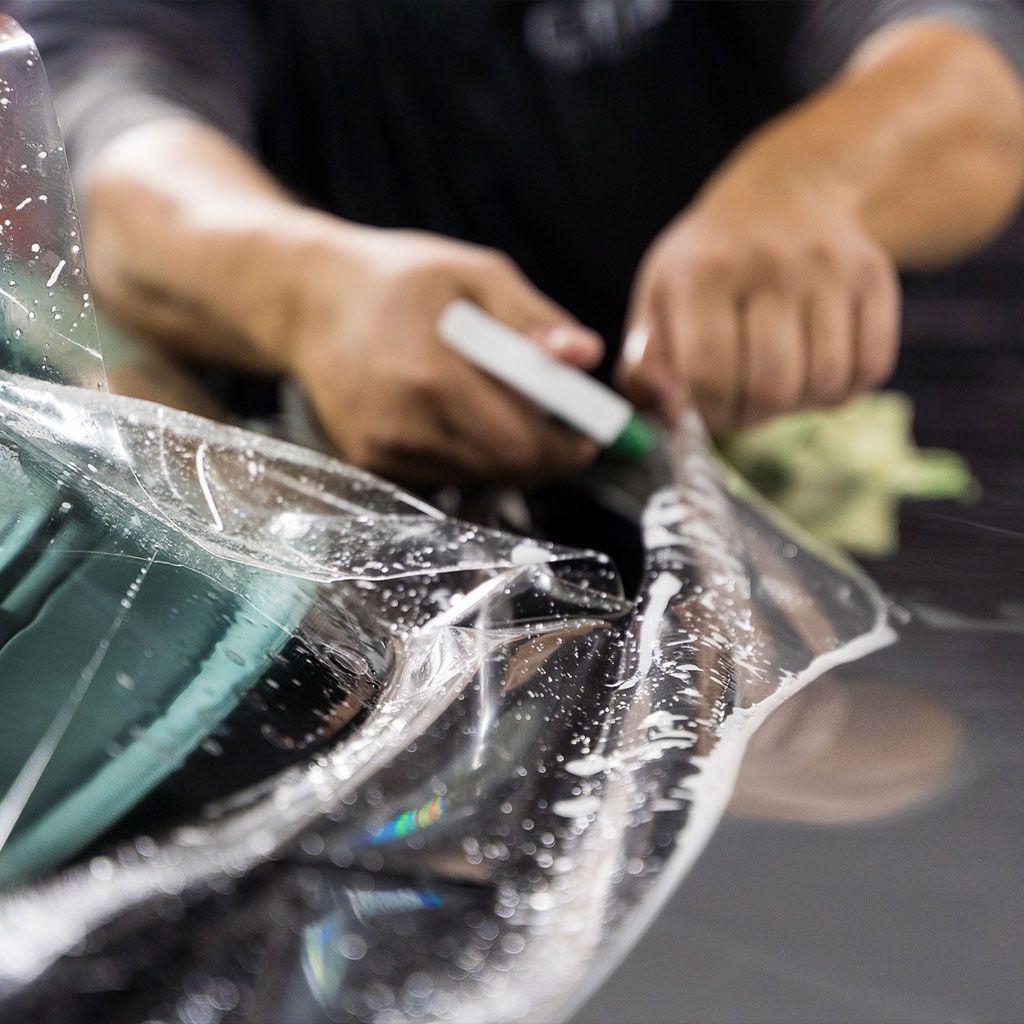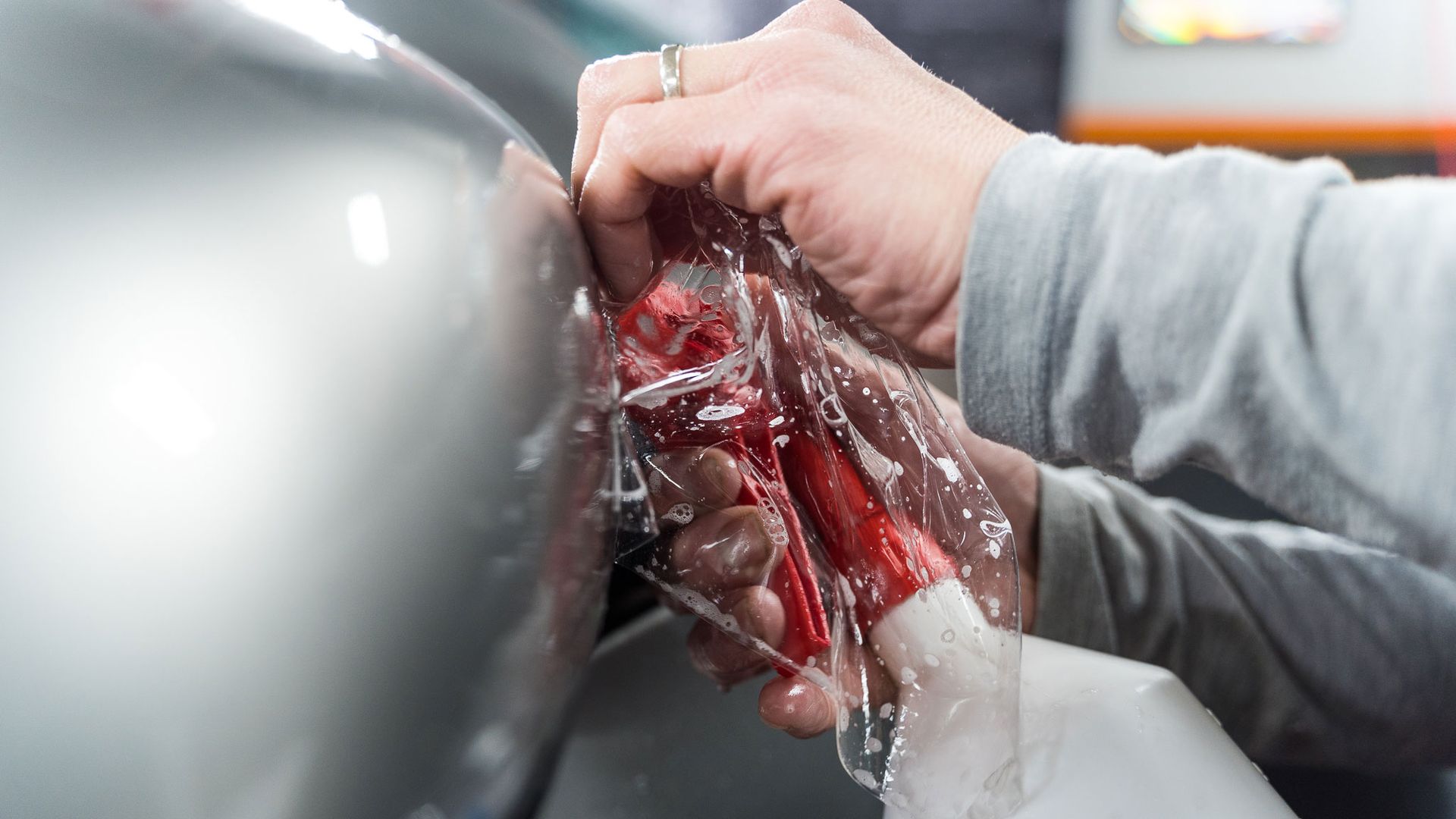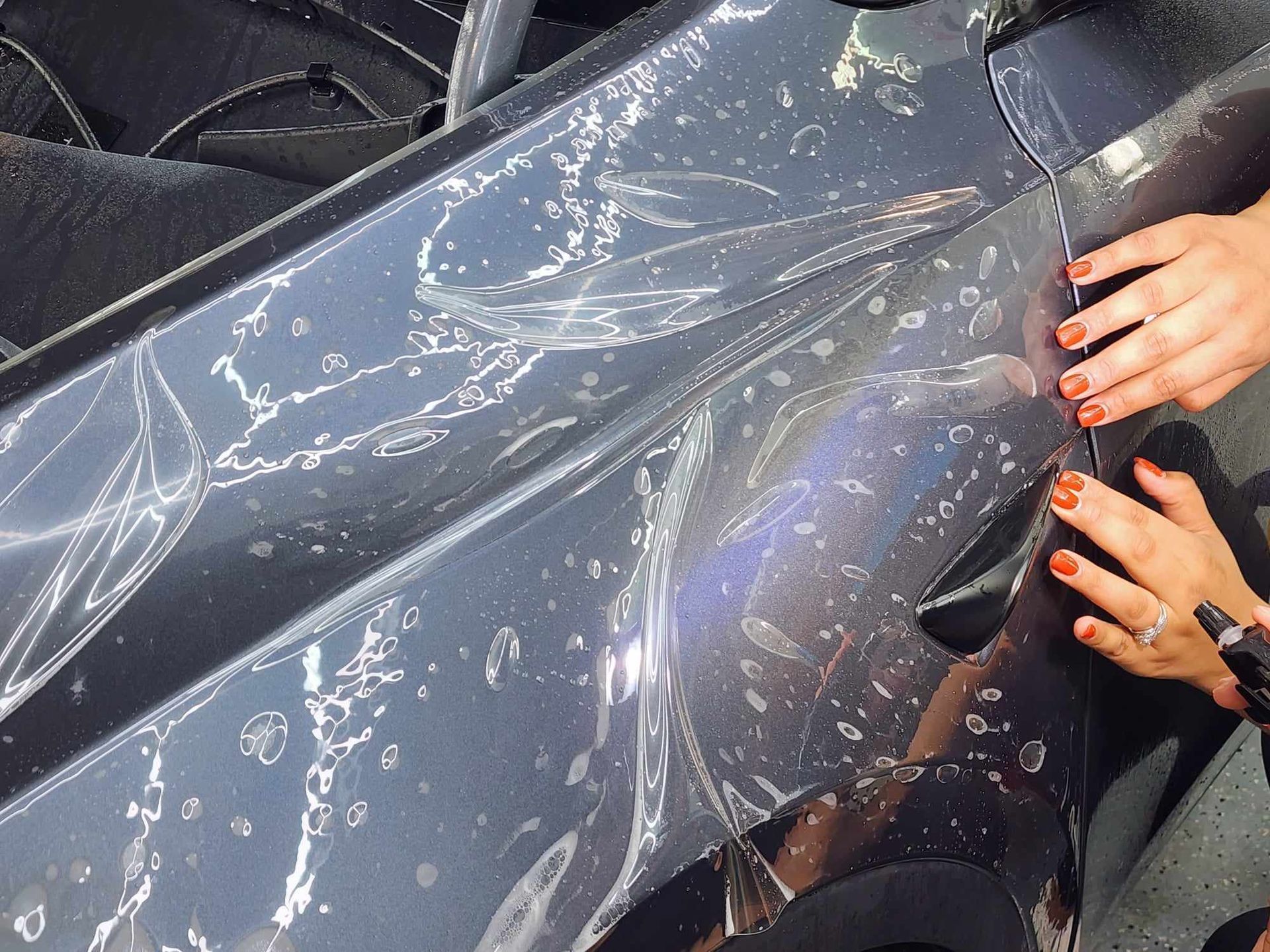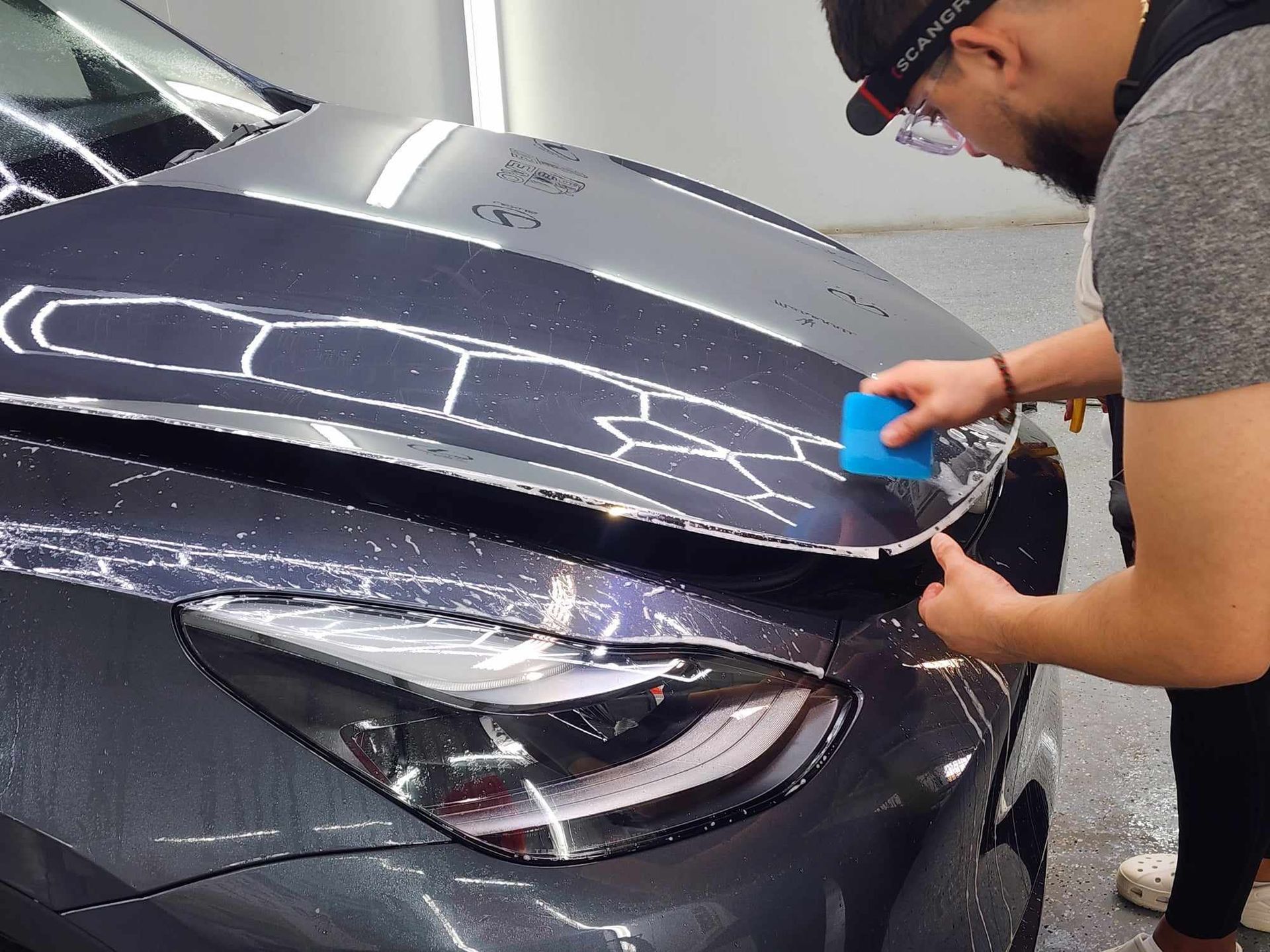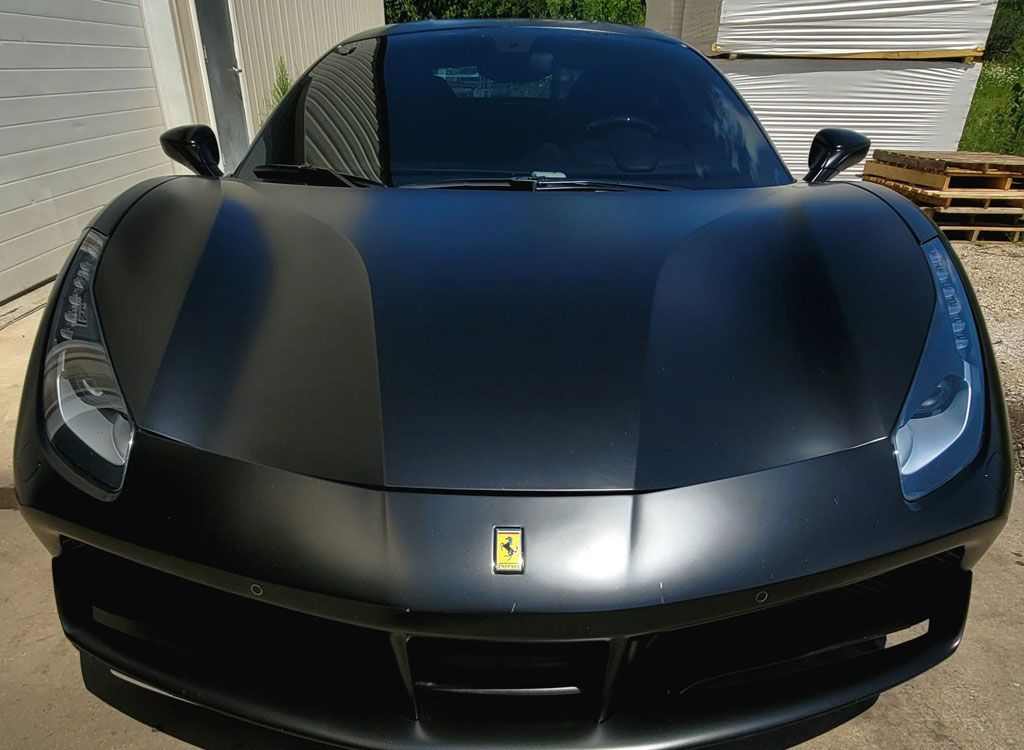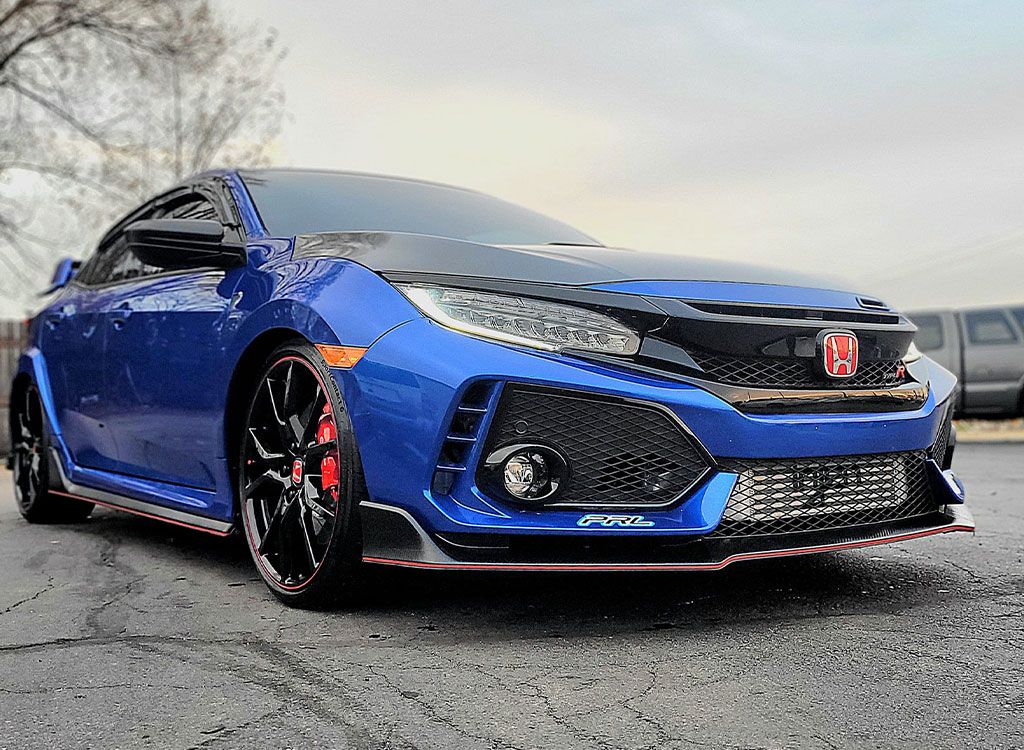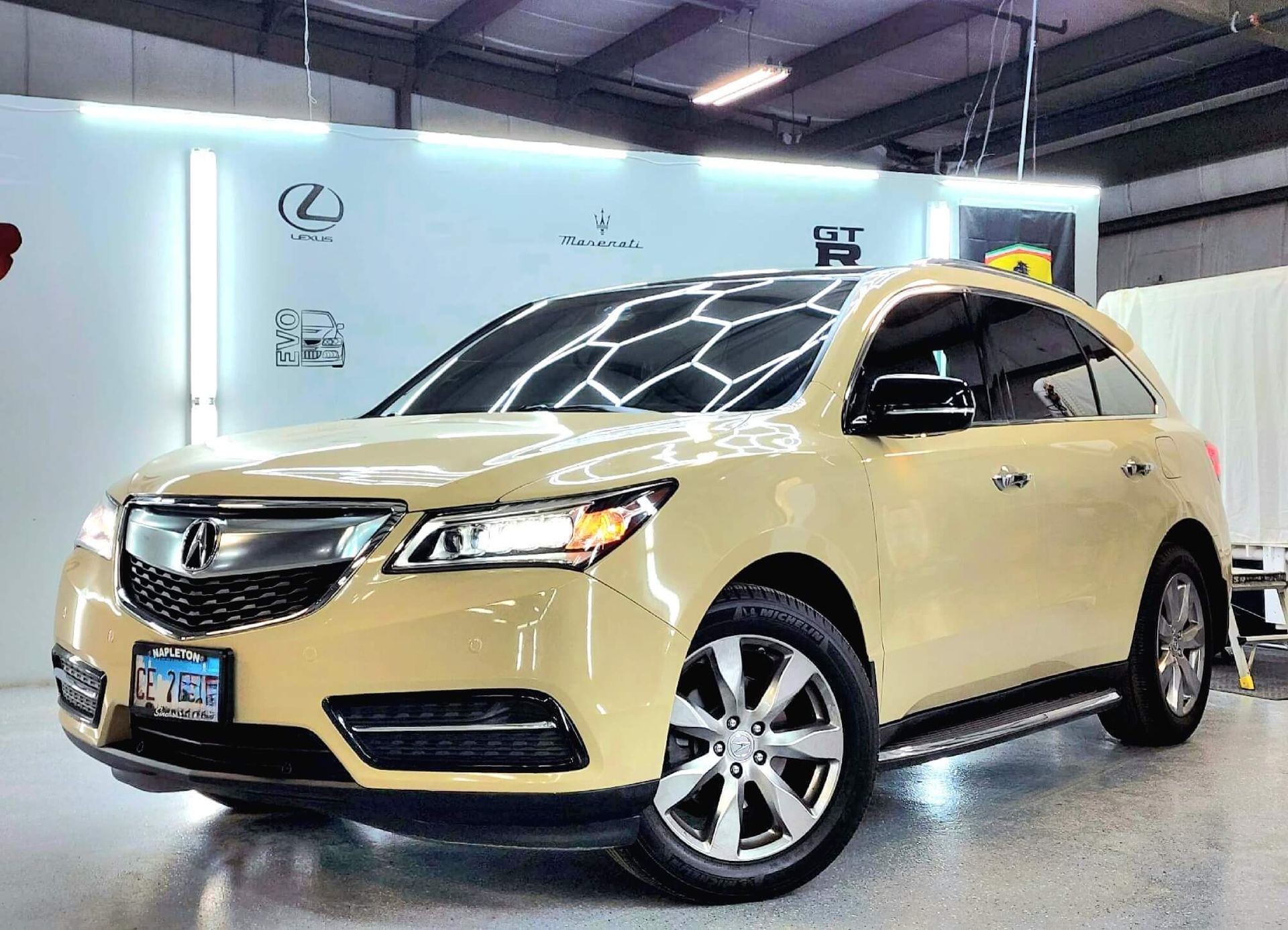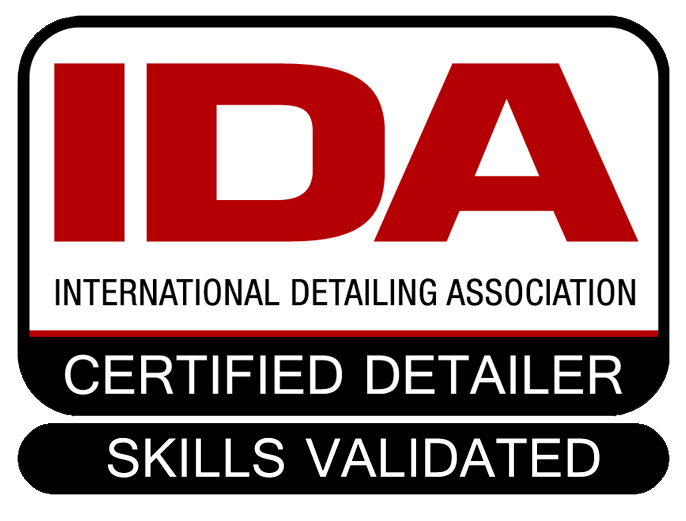The Benefits of PPF: How It Shields Your Car from Rock Chips and Road Debris
Imagine cruising down your favorite highway when a tiny rock pings against your windshield. It’s only a matter of time before your car’s pristine paint job faces countless hazards from unforgiving roads. Fortunately, there's a solution that provides more than temporary peace of mind. Paint protection film isn't just about shielding your vehicle from rock chips; it also offers comprehensive benefits such as UV resistance and ease of cleaning.
Paint protection film acts as a durable, transparent shield against rock chips, bug splatters, minor abrasions, and road debris. When professionally applied to high-impact areas of the vehicle, such as the hood, front bumper, and side mirrors, a paint protection film absorbs the impact of these hazards, minimizing damage to the underlying paint.
How Does Paint Protection Film Work?
Picture this: Your car is cruising along the highway when suddenly it gets pelted by gravel and stones kicked up by other vehicles. All these tiny, hard objects hit your car's front end, creating small nicks and scratches. This is essentially what a paint protection film is designed to prevent or minimize. PPF acts as a barrier between your car's paint and the outside world. It is like a superhero's invisible shield that absorbs the impact of these road hazards. When a rock chip comes hurtling towards your car, the strong adhesive properties of paint protection films allow it to absorb the impact and disperse the force across its surface. Instead of letting the rock chip directly hit the car's clear coat, the paint protection film takes the hit, preventing damage to the original paint underneath. This sacrificial layer ensures that your car looks pristine and untouched despite regular exposure to various hazards.
Imagine paint protection film as a protective force field around your car. It acts as a guardian against scratches, bird droppings, insect splatters, and other external elements that can degrade your vehicle's appearance. Now, if you're worried about visible scratches on the paint protection film itself, many modern films have self-healing properties. This means that minor scratches and swirl marks on the film can vanish when exposed to heat from the sun or warm water. The film essentially repairs itself, maintaining a smooth and polished appearance without requiring extensive maintenance efforts. So there you have it! Paint protection film plays a crucial role in shielding your car from road debris onslaught while keeping its aesthetic appeal intact.
Comprehensive Benefits of PPF
Paint protection film serves as a shield that not only protects your car but also offers fantastic benefits to keep your vehicle looking great and fresh for years to come.
- UV and Environmental Resistance: UV rays from the sun can cause your car's paint to fade over time, making it look dull and worn out. A paint protection film acts as a protective barrier, shielding the paint from harmful UV rays, preventing fading and oxidation, and keeping the color vibrant and the surface glossy for much longer. Additionally, it guards against environmental contaminants such as bird droppings, tree sap, and acid rain. These elements can be quite damaging to your car's paint if left untreated for long periods. A paint protection film provides a layer of defense against these natural adversaries, preventing them from etching into the paint over time.
- Enhanced Aesthetic Appearance: High-quality paint protection films not only protect your car but enhance its overall appearance by maintaining or even improving the glossiness and shine of the vehicle's paint. This ensures that your car looks newer and more appealing for an extended period of time.
- Resale Value Preservation: Prospective buyers prefer vehicles with pristine paint jobs and minimal cosmetic flaws. By preserving the original factory paint, a paint protection film significantly contributes to maintaining your car's resale value.
- Ease of Maintenance: A paint protection film with its hydrophobic properties makes cleaning your car easier. This means water beads off the surface, reducing the risk of water spots and grime adherence and simplifying maintenance. From safeguarding your vehicle against UV rays and environmental hazards to enhancing its visual appeal and simplifying maintenance, a paint protection film offers a wide range of benefits that go beyond physical protection. It truly is an investment that pays off in numerous ways, both now and in the future.
Effective Installation Techniques
The process of installing paint protection film is crucial for maintaining the integrity and longevity of your vehicle's surface. While a DIY approach may be tempting, professional installation comes highly recommended for several compelling reasons. Certified experts have access to plotter-cut patterns specifically tailored to fit each car model, ensuring a seamless and precise application that DIY kits may not be able to match.
These plotter-cut patterns are designed with utmost precision, conforming exactly to every curve and contour of the vehicle. This level of customization guarantees an impeccable fit, significantly reducing the risk of misalignment or inaccuracies that could compromise the protective capabilities of the film. It also ensures that no excess material is left behind, preventing unsightly edges or corners that can detract from the appearance of the vehicle. Below is a step-by-step process of a paint protection film installation:
Step-by-Step Process
- Surface Preparation: Before applying paint protection film, thorough surface preparation is key. The vehicle must be meticulously washed to remove all contaminants, followed by the use of a clay bar to achieve a clean and smooth surface. Any residual dirt or particles can compromise the adhesion and effectiveness of the film, underscoring the importance of this initial step.
- Template Cutting: Once the surface is impeccably prepped, specialized software is utilized to precisely cut the paint protection film according to the make and model of the car. This step further emphasizes the individualized nature of professional installation, ensuring an exact fit that maximizes protection without impeding visual aesthetics.
- Application: An expert application process involves using a slip solution to position the film accurately before employing a tack solution to secure it in place. These solutions are integral to achieving optimal alignment and adherence, minimizing the likelihood of air bubbles or misalignments that could compromise the film's protective capabilities.
- Finishing: To complete the paint protection film installation process, a squeegee is employed to remove any remaining air bubbles while guaranteeing full adhesion across the entire surface. The edges are skillfully wrapped and trimmed to create a seamless finish that integrates seamlessly with the vehicle's contours.
Investing in professional installation not only ensures superior adherence but also provides peace of mind in knowing that your vehicle's paint is being safeguarded with meticulous precision. With these enhanced techniques for professional installation, you can rest assured that your paint protection film will deliver exceptional protection without compromising the aesthetic appeal of your vehicle.
Durability and Longevity of Paint Protection Film
So, you've invested in that shiny new car, and now you want to keep it looking fresh for as long as possible. This is where the durability and longevity of paint protection film come into play. A paint protection film acts as a safeguard against rocks, road debris, and environmental contaminants. But how long can you count on it to keep doing its job? The good news is that a paint protection film can last a pretty long time, typically around 5 to 10 years. However, this timeframe can vary depending on a few factors, such as the quality of the product itself, your driving conditions, and most importantly, how well you take care of it. For instance, high-quality paint protection film options offer superior durability with advanced self-healing properties. These films are designed to resist scratches, swirl marks, and abrasions while maintaining their optical clarity.
To ensure your paint protection film lasts as long as possible, you'll need to give it some TLC. Regular washing with a pH-neutral soap is crucial—it keeps the film clean without degrading it. You'll also want to avoid using abrasive cleaning tools that could scratch or damage the film over time. Think of it as giving your car a spa day every now and then. On top of regular maintenance practices, some manufacturers even offer warranties that cover yellowing, peeling, and cracking. This provides added peace of mind and showcases the confidence that manufacturers have in the longevity of their products. By understanding these aspects of pain protection film durability and longevity, you can be more assured about protecting your car's beauty for years to come.
Common Myths and Misconceptions
- Removal and Replacement: One of the most prevalent myths about paint protection film is that, while it effectively shields against rock chips and road debris, it damages the car's paint when removed. This couldn't be further from the truth. High-quality paint protection film is specifically designed to be safely removable without causing harm to the underlying paint. In fact, any residue left on the surface after its removal can typically be cleaned with a mild solvent without impacting the original paint's integrity. This myth likely stems from previous versions of protective films that were not as advanced as contemporary options. Fortunately, modern paint protection films have come a long way in terms of technology, making it easier than ever to ensure that your car's exterior remains unharmed even after prolonged use.
- Visibility and Attractiveness: Another misconception is that paint protection film is visible and unattractive. When professionally installed by skilled technicians, a paint protection film is virtually indistinguishable from the rest of the car's exterior. Modern films are optically clear, enhancing rather than detracting from the appearance of the paint underneath. This ensures that your car maintains its sleek, polished look while being safeguarded from unsightly damage caused by road debris. It's vital for consumers to understand that advancements in paint protection film technology have made it nearly invisible while still providing outstanding protection. By dispelling this myth, car owners can feel reassured that their vehicle's aesthetic appeal will remain uncompromised with the application of paint protection film.
- Applicability to All Vehicles: Some individuals may believe that paint protection film is unnecessary for daily drivers or non-luxury vehicles. However, this couldn't be further from the truth. Even for everyday commuter cars, PPF offers substantial protection against the wear and tear of daily driving. From protecting against gravel spray on highways to shielding against parking lot mishaps, a paint protection film goes a long way in maintaining a car's aesthetics and resale value. It serves as a reliable defense against unavoidable nicks, scratches, and other damage that accumulates over time as a result of regular use. By addressing this misconception, it becomes evident that paint protection film isn't exclusively designed for luxury vehicles or rare collector cars; instead, it offers value for all types of cars by preserving their appearance and preventing potential depreciation.
Cost vs. Value Analysis
The decision to invest in paint protection film can be influenced by various factors, with cost being one of the primary concerns. There's no denying that the initial expense of PPF installation, varying from several hundred dollars for partial coverage to over five thousand dollars for full-body protection, can seem daunting. However, it's crucial to weigh this upfront expenditure against the long-term benefits and savings that come with paint protection film. In reality, opting for PPF is more like making a strategic investment rather than incurring an unnecessary expense. Consider this: a single visit to repaint or repair a hood damaged by rock chips can easily cost thousands of dollars. When you compare this potential repair cost to the initial investment in paint protection film, the value becomes clear.
Paint protection film not only saves money but also preserves the original factory paint, which tends to be more resilient than aftermarket paint jobs. Let's put this into perspective with a real-world scenario. Imagine you're driving on a gravelly road, and debris pings against your car's hood, leaving unsightly chips and scratches. Without PPF, these damages could require extensive paint touch-ups or even a full repaint, all of which are significant expenses that can accumulate over time. On the flip side, cars equipped with paint protection film present fewer cosmetic issues to potential buyers. This means that when it comes time to sell, a vehicle with paint protection film often commands higher resale prices due to its preserved exterior condition. The enhanced resale value associated with paint protection film means that the initial investment can be partially or fully recouped at the point of sale.
When considering cost versus value, it's clear that while the initial investment in paint protection film may seem substantial, its long-term benefits far outweigh the upfront expense in terms of both financial savings and retained vehicle value. While the immediate cost may raise eyebrows, the enduring advantages of paint protection film fortify its status as a wise investment for ensuring your vehicle remains in prime condition and retains its value over time.
Outstanding Paint Protection Film Solutions in Elgin, IL
Protect your vehicle with CM3 Detailing Studio & Ceramic Coating’s outstanding paint protection film solutions in Elgin, IL. Our expertly installed paint protection film is designed to safeguard your car’s finish from scratches, chips, and environmental damage while maintaining its original beauty. Choose our professional team for long-lasting protection that keeps your car looking pristine on every drive. Schedule your appointment or call us at (630) 400-6766 to get started with your paint protection film service!

